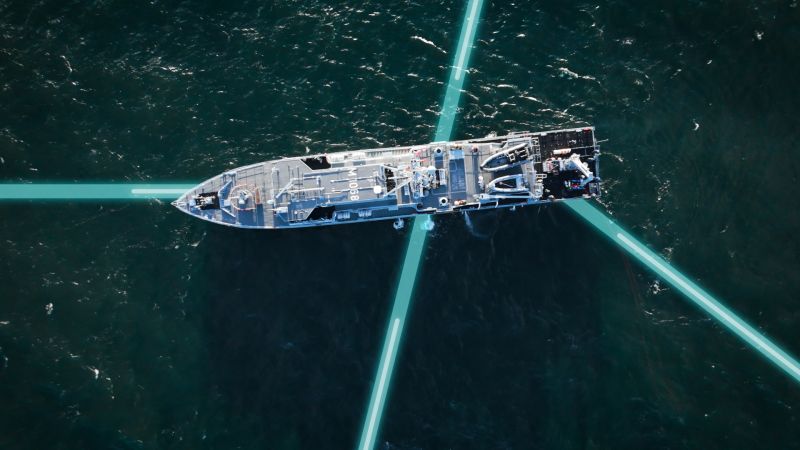Undersea Internet Cables: Mapping The Infrastructure Powering Your Online World

Table of Contents
Undersea Internet Cables: Mapping the Infrastructure Powering Your Online World
Global internet connectivity relies on a vast, largely invisible network of undersea cables. These fiber-optic arteries carry the vast majority of the world's digital data, quietly powering everything from video streaming to online banking. Understanding their geography, vulnerabilities, and future is crucial to comprehending the digital age itself.
The internet, as we experience it, is far from a cloud-based abstraction. It's a physical network, and its most critical component is a global system of undersea cables. These cables, stretching tens of thousands of kilometers across ocean floors, form a complex web that connects continents and facilitates the seamless flow of data that underpins modern life.
A Network of Global Proportions:
The precise number of undersea cables is difficult to pin down precisely due to constant upgrades, additions, and the proprietary nature of some information. However, estimates suggest there are well over 400 active undersea cables globally, with thousands of individual fiber-optic strands within them. These cables don't just snake between major cities; they branch out to connect smaller coastal communities and offshore infrastructure. Major hubs, like those in New York, London, Tokyo, and Hong Kong, act as central points of interconnection, forming crucial nodes in this global network.
The Technology Behind the Waves:
Undersea cables utilize fiber-optic technology, transmitting data as pulses of light. This technology allows for incredible bandwidth and speed, far exceeding the capabilities of satellite communication for most applications. The cables themselves are remarkably robust, designed to withstand immense pressure and the harsh marine environment. They're typically protected by layers of polyethylene, steel, and other materials. Repeater stations, placed at intervals along the cable's length, amplify the signal to prevent attenuation over long distances. The exact spacing and design of these repeaters vary depending on the cable's specifications and depth.
Vulnerabilities and Threats:
Despite their robust design, undersea cables are not immune to damage or disruption. Natural disasters, such as earthquakes and tsunamis, can cause significant damage, severing cables and disrupting internet connectivity. Fishing activities also pose a risk, with accidental snagging of cables being a recurring concern. Furthermore, the possibility of deliberate sabotage, although rare, remains a concern. While the sheer number of cables and redundancy built into the network provides a degree of resilience, single points of failure can still have significant regional or even global impacts. Recent incidents highlighting these vulnerabilities have underscored the need for greater investment in cable protection and diversification of routes.
The Future of Subsea Connectivity:
The demand for global internet bandwidth is constantly growing, driven by factors such as increasing internet usage, the proliferation of data-intensive applications (like streaming services and cloud computing), and the expansion of the Internet of Things (IoT). This necessitates ongoing investment in new cable systems and upgrades to existing infrastructure. We are seeing a trend towards the development of higher-capacity cables with increased bandwidth and improved resilience. Furthermore, research into new technologies, such as advanced fiber-optic designs and underwater robotics for repair and maintenance, aims to enhance the efficiency and reliability of this critical infrastructure.
Conclusion:
The network of undersea internet cables is a silent but indispensable pillar of our interconnected world. Its complexity, vulnerabilities, and ongoing evolution demand our attention. Understanding this vital infrastructure, and investing in its protection and expansion, is essential to ensuring the continued growth and stability of the global digital economy. The unseen network beneath our oceans truly powers the digital age.

Featured Posts
-
 The We We Are A Detailed Recap Of Severance Season 2 Episode 6
Feb 22, 2025
The We We Are A Detailed Recap Of Severance Season 2 Episode 6
Feb 22, 2025 -
 Remembering Voletta Wallace Matriarch And Inspiration
Feb 22, 2025
Remembering Voletta Wallace Matriarch And Inspiration
Feb 22, 2025 -
 Justice Departments Deletion Of Federal Police Misconduct Database
Feb 22, 2025
Justice Departments Deletion Of Federal Police Misconduct Database
Feb 22, 2025 -
 Gaza Remains Israeli Army Denies Body Is Bibas Mother
Feb 22, 2025
Gaza Remains Israeli Army Denies Body Is Bibas Mother
Feb 22, 2025 -
 Cult Stock Palantir Sees Continued Market Weakness
Feb 22, 2025
Cult Stock Palantir Sees Continued Market Weakness
Feb 22, 2025
Latest Posts
-
 007s Future Amazons Search For The Next James Bond
Feb 24, 2025
007s Future Amazons Search For The Next James Bond
Feb 24, 2025 -
 Jennie And Doechii Unleash Captivating Extra L Video For Ruby Track
Feb 24, 2025
Jennie And Doechii Unleash Captivating Extra L Video For Ruby Track
Feb 24, 2025 -
 Live Score Aston Villa Vs Chelsea Fc Premier League Match
Feb 24, 2025
Live Score Aston Villa Vs Chelsea Fc Premier League Match
Feb 24, 2025 -
 Report Popovich Likely To Retire After Long Spurs Career
Feb 24, 2025
Report Popovich Likely To Retire After Long Spurs Career
Feb 24, 2025 -
 2 0 St Mirren Win Exposes Rangers Weaknesses Clement Under Scrutiny
Feb 24, 2025
2 0 St Mirren Win Exposes Rangers Weaknesses Clement Under Scrutiny
Feb 24, 2025
